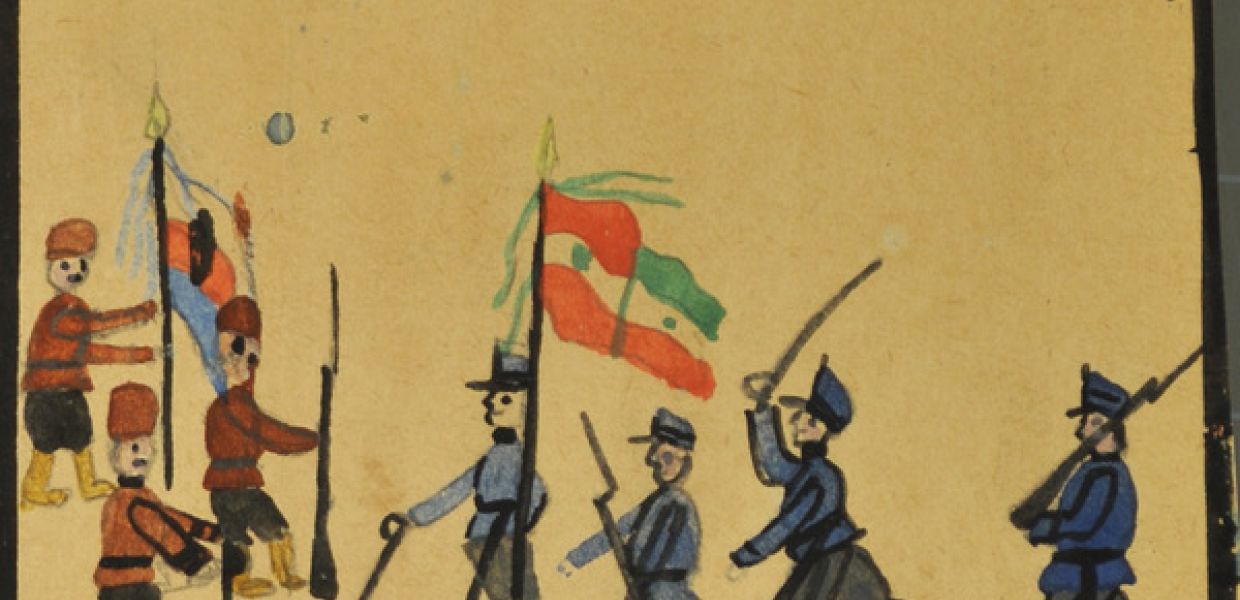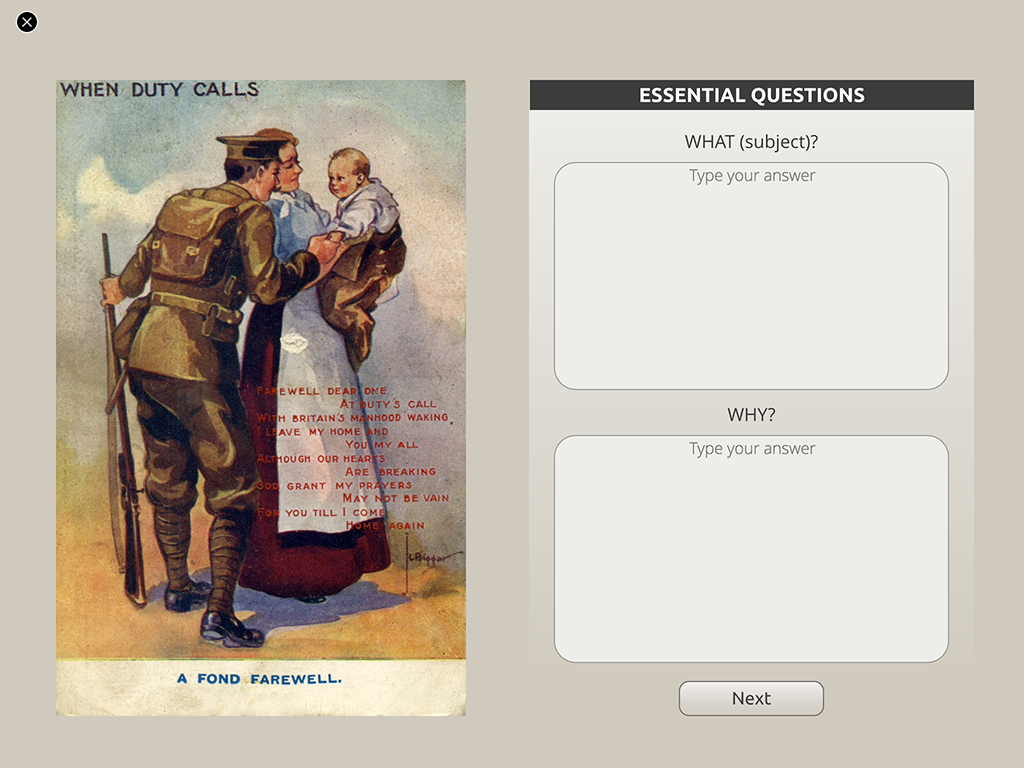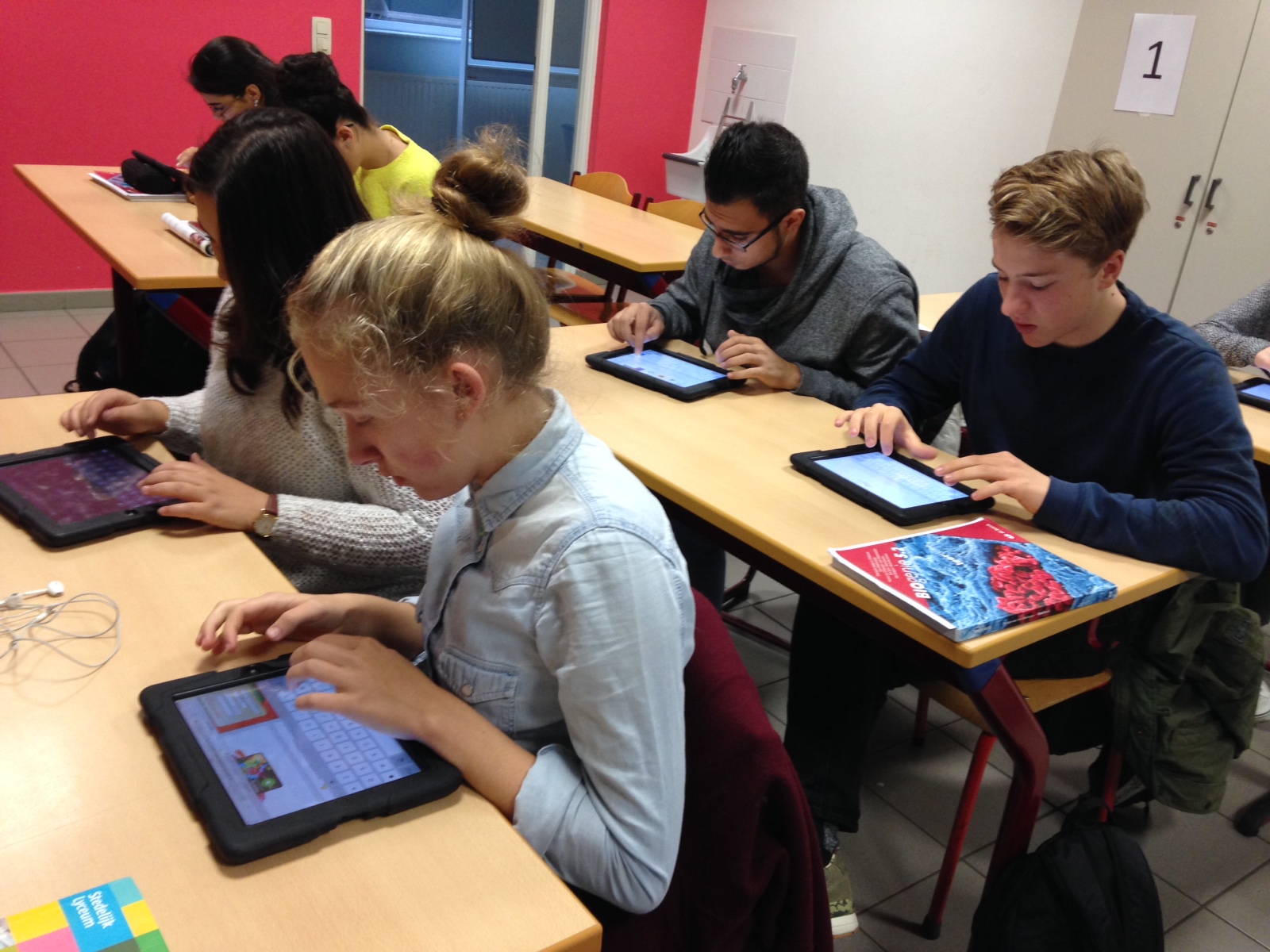An Apple for the teacher: interview with Gwen Vergouwen

With our friends at Apple and EUROCLIO – the European Association of History Educators - we’ve just launched our first Multi-Touch book and iTunesU course. These resources take material contributed to Europeana about the First World War and transform it into teaching resources for the classroom.
Here, we ask Apple Distinguished Educator Gwen Vergouwen, whose hard work and ideas were central to this achievement, to tell us all about it.
Can you tell us about the Apple Distinguished Educator Residency programme?
Every teacher who uses Apple technology in the classroom can apply to become an Apple Distinguished Educator, making them part of a global community of teachers. The Residency programme gives ADEs like me the opportunity to work for a week behind-the-scenes with great cultural institutions like museums, archives and libraries, learning from experts and helping them to develop great learning materials with Apple technology. I was really happy to be one of the lucky few selected to do this.

A screenshot from the new Multi-Touch book
Why did you decide to apply for the Europeana WW1 project?
I’ve always been interested in World War One. It is a war that has an effect on people’s daily lives, even today. Ten years ago, I organized field trips for my students to the region of Ypres in Belgium, where nearly 500,000 people lost their lives in Flanders Fields. So when I heard about the opportunity to develop learning materials about the First World War with Europeana, I immediately applied. It was also a nice opportunity to get to know Europeana better.
What did you get up to during week in residence with Europeana and EUROCLIO?
First we spent two days discussing and agreeing on the concept of the Multi-Touch Book and iTunes U course. We combined our educational expertise to create activities to sharpen the critical thinking skills of students in secondary education using primary sources from the Europeana 1914-1918 collection.
Experts at Europeana dug deep in their collections to select suitable, original and sometimes unusual resources like letters, children’s drawings, movies, postcards etc. These items had been contributed to Europeana by members of the public across Europe during Family History Roadshows. As such, they are items of precious personal memorabilia and give learners a unique perspective on real people’s experience of the war.
The last two days were used to design the first drafts of a Multi-Touch Book and the corresponding iTunes U course. This gave me the opportunity to discuss and clarify the learning potential of Apple technology and finally to demonstrate the entire project to both Europeana and EUROCLIO.

Gwen's students all get to grips with the new materials. Image: Gwen Vergouwen
How do you think digital resources can encourage students to hone their critical thinking skills in a way that supports, or even surpasses, traditional learning materials?
Technology makes historical sources accessible in a way no book, no museum, no archive can! The primary source lies in the hand of the learner. It makes the past touchable! Thanks to technology and digital resources you can zoom in to explore details, you can watch movies at any time you want to, original books, objects and documents don’t get damaged and they can be widely shared. Learners can even add new data like notes, drawings and sounds. Digital resources make it possible to experience cultural heritage in a way that wasn’t possible before. And I’m sure we are only at the beginning of technological innovation in learning. Maybe one day, I’ll invite a virtual Napoleon to assist my classroom.
What do Europeana’s digital collections offer to educators?
The accessibility and diversity of the collection is very appealing to educators. Teachers too often have to rely on documents, sources, worksheets and textbooks provided to them by publishers. Digital versions of collections kept in archives, museums, libraries have to be as accessible as possible. They are the origin of our identity! We should give every citizen the chance to use the sources to study, to interpret, to question, to create, to enjoy and to share.
The internet can be unreliable – sources can be only partially attributed or not attributed at all, and facts can be incorrect. Is there anything heritage institutions can do to help solve this issue?
Heritage institutions have a duty to stimulate critical thinking skills. Europeana and EUROCLIO are two excellent examples of good practice. But I’m quite realistic. Heritage institutions around the globe are funded in all kinds of different ways and so what they can achieve varies. It is up to the user to do a little research. Asking some essential questions can be quite helpful– if you know, for example, who created a resource, for whom and why, you’ll be more able to decide if it is a reliable resource for teaching.

Franz Przybyla's drawings, contributed to Europeana 1914-18 by Heinrich Przybyla, CC BY-SA.
Finally, you sourced lots of the material from Europeana 1914-1918. Do you have any favourites?
The children’s drawings of Franz Przybyla – no doubt about it. As a child, he drew many key moments of World War One. It makes you aware of the fact that the war had an enormous impact on the lives and perspectives of children. This is something we often forget, but we can see today in the public reaction about refugees – particularly children - fleeing war in the Middle East.
